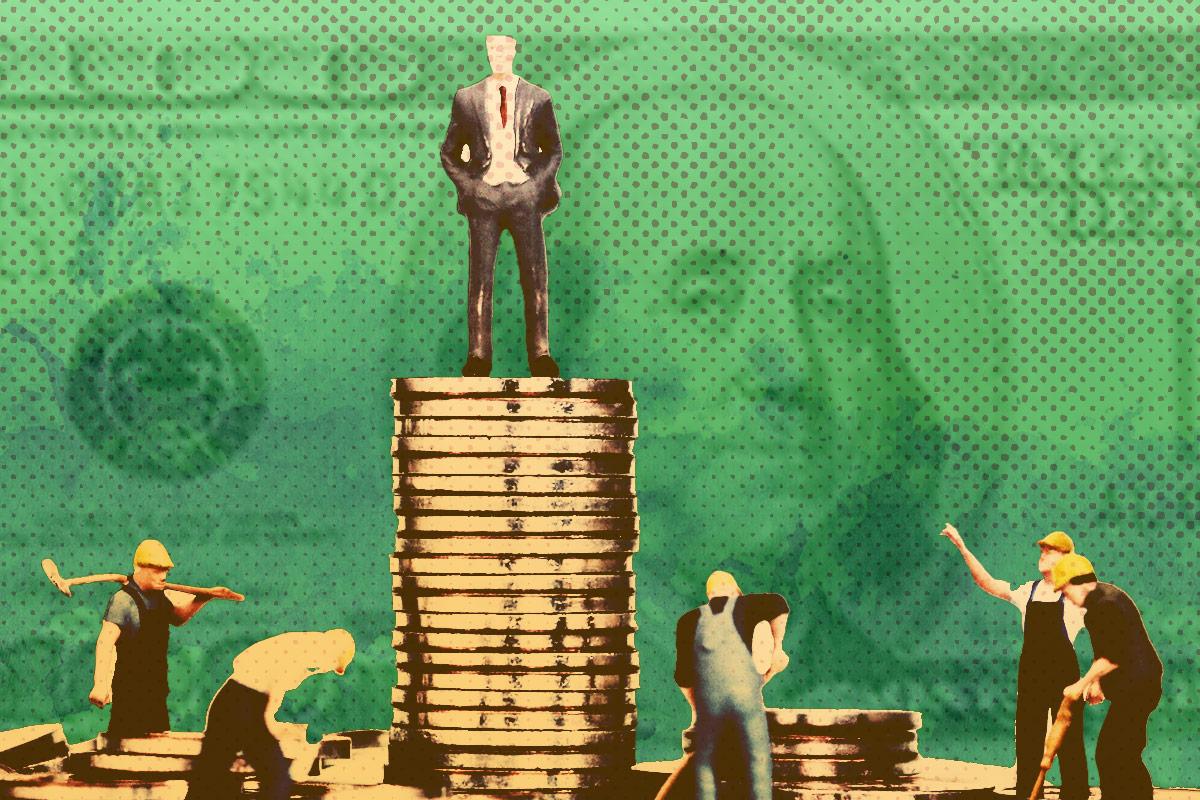
Boosted by low interest rates and an expansionist budget policy, the U.S. economy has been experiencing the longest period of growth in its history. However, on closer inspection, the dream of attaining middle class status through social mobility has been shattered.
Growth in emerging countries since the 1980s has decreased the wealth gap worldwide. In spite of this trend, inequality has sharply risen in developed countries, especially in the United States. Officially, 43 million Americans live in poverty. Half a million Americans are homeless and the country has a prison population of 2 million; i.e., one of the highest rates of incarceration in the world.
Concentration of Power
The work of economist Lucas Chancel offers a historical look at this social divide. The share of national income going to the bottom 50% of Americans fell from 20% in 1980 to under 12% in 2006. At the other end of the spectrum, the capture of value by the richest Americans has reached record levels. The share going to the top 10% increased from 34% to 47% over the same period. In addition, the income of the top 1% virtually doubled, from 10.5% to 20%.
According to Thomas Piketty, this concentration of wealth is consistent with the long-term trend of wage stagnation. When economic growth is weak, the return on capital requirement captures a significant share of value added, thereby establishing a society of rentiers comparable to that of the 19th century.
In the corporate world, the acceleration of network effects brought about by globalization and digital technology strengthens the structural advantage of top companies. This leads to concentration across all sectors in the United States.
Income from monopolies explains, in part, the rise in the share of profits in U.S. gross domestic product (at the expense of wages). When in a dominant position, companies have little incentive to invest in production capability.
Constant Demand for Adaptation
Beyond macroeconomic imbalance, Samuel Atkinson* touches on changes in the balance of power. Until the end of the 1970s, the Keynesian compromise had remarkably contained the formation of monopolies and the concentration of wealth. However, the fall of the Berlin Wall ultimately lifted the requirement of maintaining redistribution mechanisms as a way to ensure political stability.
Without a solid social safety net in place, systemic imbalances worsen. Low income households tend to take on debt in order to compensate for income stagnation, feeding artificial growth founded on debt. U.S. households today are more in debt than they were following the 2008 financial crisis. At the other end of the spectrum, the extreme concentration of capital fuels speculative bubbles. The stock market boom concerning companies specializing in emerging technologies is somewhat reminiscent of the dot-com bubble of the 2000s.
Beyond economic instability, the dissolution of social ties is fueling widespread despair. The value of self-esteem today is related to competition, leading to narcissism and stress. Anxiety eats away at workers’ minds and bodies, bringing about obesity, alcoholism, diabetes and drug addiction.
The work of Nobel Memorial Prize recipient Angus Deaton reveals a decline in life expectancy for white Americans in midlife linked to deaths by drug overdose and suicide. The United States has been in the grip of an opioid epidemic for close to a decade. Around 1.7 million people have problems related to the use of opioid pain relievers prescribed to treat pain.
Call for a New Deal
The United States is confronted with a level of urgency entailing a complete policy overhaul. U.S. Rep. Alexandria Ocasio-Cortez, a rising star in the Democratic Party, has proposed cutting-edge change via a “Green New Deal.” Inspired by Franklin D. Roosevelt’s New Deal program, the proposal aims to equip the country with infrastructure to enable it to reduce its dependence on fossil fuels and to become carbon neutral by 2035.
Taxation appears to be the favored tool for enabling social and environmental transformation. Several leading Democratic Party members suggest raising the top income tax rate from 37% to 70% (for yearly earnings beyond $10 million). In the past, the United States had much higher progressive taxation and income tax rates. In the 1950s, during the (Republican) Eisenhower presidency, the top marginal tax rate reached 90%.
The extreme concentration of wealth weakens the equity of rewards. Winners are always compensated more. Democracy entails, rather, a system of checks and balances capable of limiting economic concentration. Joseph E. Stiglitz calls for restoring the balance between markets, the government and civil society in order to ensure that all Americans can be part of the middle class.
Bertrand Hartemann is a chief marketing officer based in Beijing
*Editor’s note: The author may have meant to refer to Tony Atkinson, a British economist who studied inequality and poverty.

Leave a Reply
You must be logged in to post a comment.